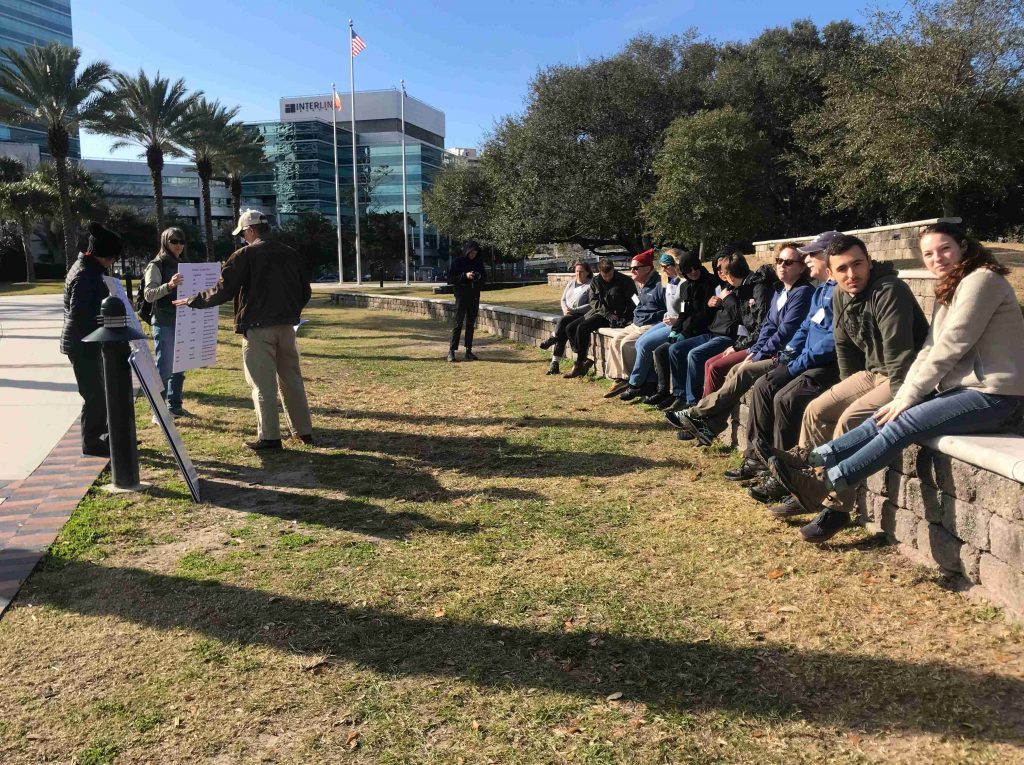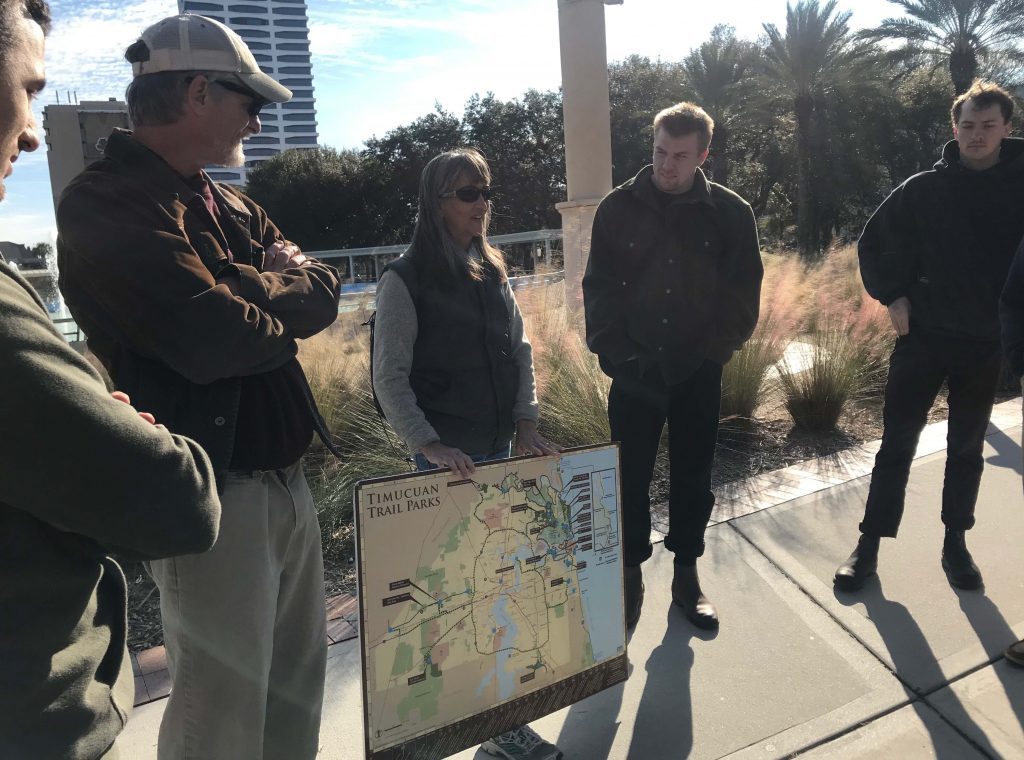
The January 2019 event in the Beyond the Trail: A River Runs Through It took place at Friendship Fountain with UNF professor Dr. Charles Closmann.
In the early days of settlement in Jacksonville, the St. Johns River played a major role in trade. Goods such as lumber were shipped down the river. Eventually railroads developed alongside the river to make Jacksonville an important location for trade.

The expansion of stockyards, slaughterhouses, and the paper and lumber industries created major pollution problems in the St. Johns River during the late 1800s. Initially, the pollution was not considered a problem because of the old phrase, “dilution is the solution to pollution.” Since the river was so large, many thought the pollution would be diluted to a level that would not be dangerous.

After World War II, Jacksonville experienced a rapid increase in population growth and the city took on a “pro-growth and pro-development” mindset. Jacksonville became a well-known port city for lumber due to the growing paper industry.
Throughout the 1970s-90s, development in Jacksonville became too intense to combat pollution. The state of Florida threatened to prevent development if the pollution continued. Early efforts to clean up the river were a success largely thanks to the Clean Water Act and Mayor Hanz Tanzler’s push for environmental regulation. Hanz Tanzler also commissioned a study on Jacksonville’s parks in 1970. The study found that Jacksonville was significantly behind in the growth of parks compared to the rest of the United States. In 1999, Mayor John Delany and the City of Jacksonville worked to create the Preservation Project Jacksonville. The project acquired land to help divert growth to certain areas of Jacksonville, which later transformed these green spaces into parks and preserves for public access. Jacksonville now has the largest urban parks system in the United States, largely due to the work of the Preservation Project and the government partnerships created by the City of Jacksonville, the National Park Service and the Florida State Parks.

The St. Johns River Taxi has provided transportation up and down the river for a number of years. The service provides a variety of destinations within the downtown area. The group boarded the boat at Friendship Fountain and took the downtown loop to view Jacksonville from the water. The ride included passing by the recently imploded former Jacksonville City Hall, a view of the bottom of Jacksonville’s infamous bridges, and a new perspective of both downtown Jacksonville and the St. Johns River.
The next event in February 2019 will take participants on a paddle with the St. Johns Riverkeeper. The final wrap- up party for the 20189-2019 series will take place in March.
